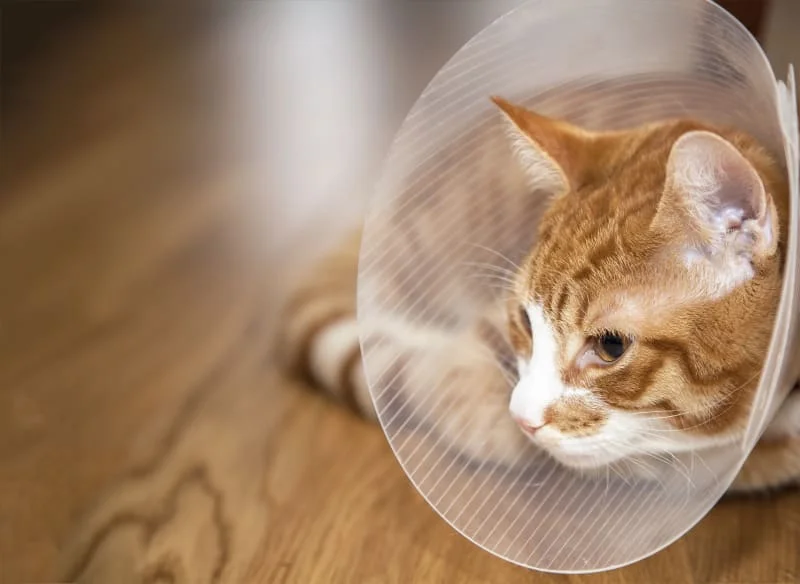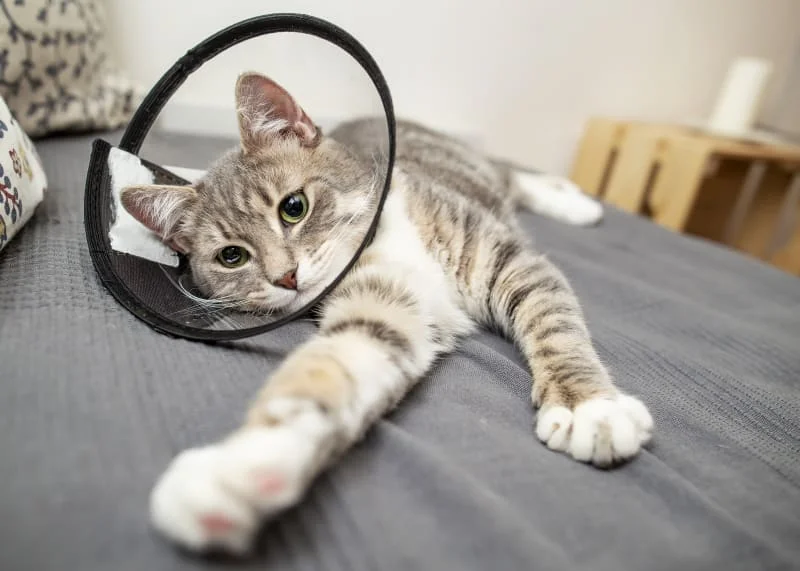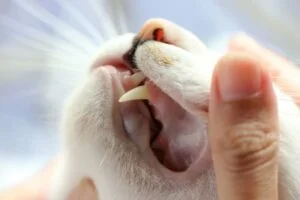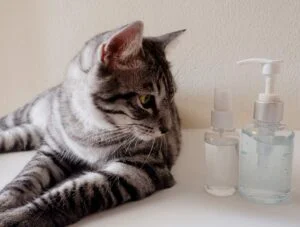How to Deal with a Cat Not Peeing After Surgery

As a pet owner, witnessing your beloved cat undergo surgery can be an anxiety-inducing experience. You may be relieved once the procedure is over, but the recovery period brings its own set of concerns, particularly when you notice that your cat is not urinating as they normally would. A cat not peeing after surgery can be a worrisome situation that requires immediate attention to ensure their well-being and prevent potential complications.
In this guide, we will explore practical tips and strategies to help your cat regain their normal urinary function during the recovery phase. We will discuss potential causes, potential home remedies, and when it may be necessary to seek veterinary assistance. By following these guidelines and being attentive to your cat’s needs, you can support their recovery, promote their comfort, and ensure their overall well-being after surgery.
Why Is Your Cat Not Peeing After Surgery?
Before we explore the tips on how to deal with a cat not peeing after surgery, it’s important to understand the potential reasons behind this issue. Several factors can contribute to a cat’s inability to urinate after undergoing surgery. One common cause is the use of anesthesia during the procedure. Anesthesia can temporarily weaken the muscles in the bladder, making it challenging for the cat to initiate urination.
Additionally, your cat may be experiencing pain and discomfort as a result of the surgery, which can affect their urinary habits. Dehydration is another factor that can contribute to reduced urine output, as inadequate fluid intake can lead to concentrated urine and potential bladder discomfort. Furthermore, postoperative urinary tract infections or blockages can obstruct the normal flow of urine, causing the cat to struggle or be unable to urinate.
It’s worth considering that psychological factors such as anxiety or stress can also impact a cat’s urinary habits. The unfamiliar environment of the veterinary clinic or the presence of other pets or people during the recovery period can trigger anxiety, leading to a reluctance or hesitation to urinate.
Understanding the potential causes behind a cat not peeing after surgery is crucial in effectively addressing the issue and providing appropriate care for your feline companion.
Tips for Dealing with a Cat Not Peeing After Surgery

Here are some ways you can effectively deal with your cat’s inability to urinate after surgery and help facilitate their recovery:
Monitor Your Cat’s Urination Habits
Monitoring your cat’s urination habits is crucial in assessing their recovery after surgery. Pay close attention to any changes in frequency, consistency, or signs of discomfort. Observe if your cat appears to strain, exhibit pain, or have difficulty passing urine.
Additionally, keep an eye on the amount of urine your cat produces. If you notice a significant decrease in the volume of urine or your cat is not producing any urine at all, it could be a cause for concern.
Maintaining a record of your cat’s urination habits can provide valuable information for your veterinarian. Note down any abnormalities or irregularities in their urination pattern and share this information during follow-up visits or when consulting your veterinarian.
By actively monitoring your cat’s urination habits, you can detect any potential issues early on and seek appropriate veterinary care if necessary, ensuring a smoother recovery and the overall well-being of your feline companion.
Offer Plenty of Water
To address potential dehydration and promote urination, it’s important to ensure that your cat has ample access to fresh water. Provide a clean water bowl that is easily accessible to your cat. Consider placing multiple water bowls in different locations throughout your home to encourage hydration.
In addition to offering plain water, you can try enticing your cat to drink more by adding a small amount of low-sodium chicken broth or tuna juice to their water. These flavors can make the water more appealing and encourage your cat to consume an adequate amount of fluids.
Regularly check the water bowl to ensure it is clean and replenished with fresh water. Hydration plays a vital role in maintaining proper urinary function, so by offering plenty of water and incorporating flavors that entice your cat, you can help stimulate their desire to drink and support their overall urinary health.
Check for Urinary Tract Blockage
If you notice that your cat is not able to urinate or is showing signs of straining while attempting to do so, it could indicate a urinary tract blockage. This condition occurs when there is an obstruction in the urinary tract, preventing the normal flow of urine.
A urinary tract blockage can be caused by various factors, such as the formation of urinary stones, mucus plugs, or inflammation in the urinary tract. It is a serious and potentially life-threatening condition that requires immediate veterinary intervention.
If you suspect that your cat may have a urinary tract blockage, it is crucial to seek professional veterinary attention without delay. The veterinarian will perform a thorough examination, potentially including diagnostic tests such as X-rays or ultrasound, to determine the cause of the blockage and implement appropriate treatment. Early intervention is vital to relieve the obstruction, alleviate your cat’s discomfort, and prevent further complications.
Try a Different Litter Box
If your cat is not peeing after surgery, it could be due to discomfort or pain associated with using the litter box. In some cases, cats may associate the litter box with their surgical experience and develop an aversion to it.
To encourage your cat to urinate, try providing a different litter box or experimenting with various litter types. Some cats may prefer a different texture or consistency of litter, such as fine-grained or clumping litter. Additionally, consider the size and depth of the litter box, as some cats may prefer more spacious or shallow options.
By offering a variety of litter box options, you can give your cat a chance to find a setup that is more comfortable for them. It’s important to be patient and observe your cat’s behavior to see if the change in litter box or litter type helps them feel more at ease and encourages them to urinate.
Offer a Calm and Stress-Free Environment
Creating a calm and stress-free environment is crucial for helping your cat feel at ease and encourage urination after surgery. Provide a quiet and secluded space where your cat can rest without disruptions or loud noises. Consider setting up a cozy bed or blanket in a peaceful area of your home.
To further reduce stress, you can use pheromone sprays or diffusers specifically designed for cats. These products release synthetic pheromones that mimic the natural calming scents produced by cats. Pheromones can help create a soothing atmosphere and promote relaxation.
Additionally, maintain a consistent routine and avoid any sudden changes or disruptions that could cause additional stress for your cat. Offering a calm and stress-free environment will not only help your cat feel more comfortable but also support their overall recovery and encourage proper urination.
Use Medication as Prescribed
If your veterinarian prescribes medication to aid in your cat’s urination after surgery, it’s important to follow the instructions provided and administer the medication as prescribed. Be sure to read the label or package insert carefully to understand the dosage and frequency of administration. Some medications may need to be given with food or at specific times of the day.
Administering the prescribed medication correctly will help support your cat’s urinary function and alleviate any discomfort or difficulties they may be experiencing. If you have any questions or concerns about the medication or its administration, don’t hesitate to reach out to your veterinarian for clarification and guidance. They can provide further instructions or adjust the medication as needed to ensure your cat’s well-being.
Visit the Vet
If your cat is not urinating despite your efforts, it is important to seek veterinary attention promptly. Visiting a veterinarian will allow them to conduct a thorough examination and potentially perform additional tests or procedures to identify the underlying cause of your cat’s urinary issue. They have the expertise and resources to diagnose and treat various conditions that may be hindering your cat’s ability to urinate properly.
Delaying a veterinary visit can put your cat’s health at risk, as urinary issues can lead to serious complications if left untreated. The veterinarian will be able to provide appropriate treatment based on their assessment, ensuring the well-being and recovery of your cat. Don’t hesitate to reach out to your veterinarian for guidance and to schedule an appointment as soon as possible.
Conclusion
Dealing with a cat not urinating after surgery can be stressful, but with the right care and attention, you can ensure a safe and comfortable recovery. Monitor their urination habits, offer plenty of water, check for urinary tract blockages, try a different litter box, create a calm environment, administer prescribed medication, and seek veterinary attention if needed. Stay patient and supportive during their recovery.


